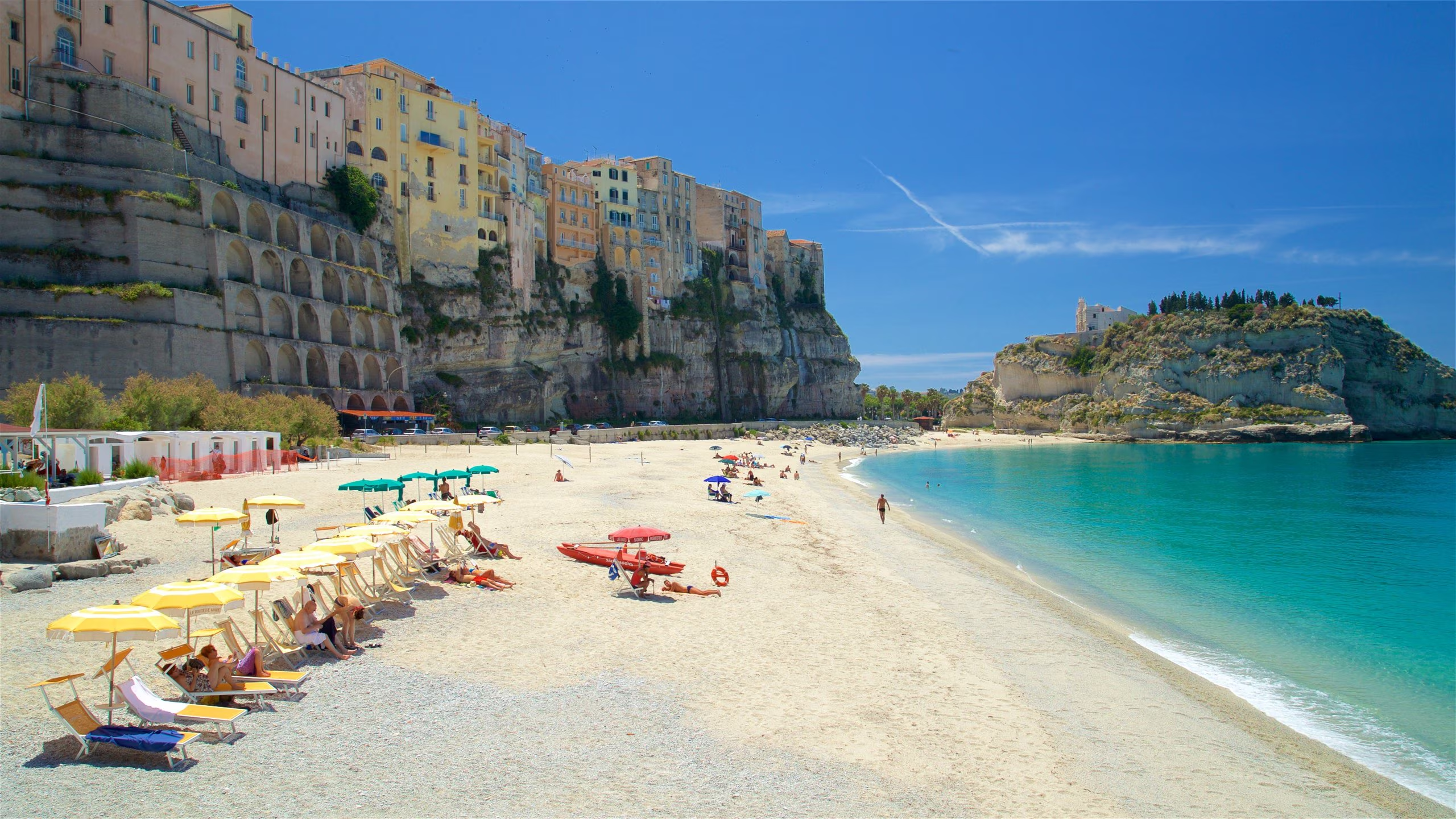Vibo Valentia is a picturesque Italian province located in the Calabria region of Southern Italy. It has a vibrant culture, fascinating history, and postcard-worthy scenery.
Vibo Valentia has an estimated population of 81,000 people across its 33 municipalities. Located on the western coast of Southern Italy, it shares beautiful stretches of coastline with both the Tyrrhenian Sea and the Ionian Sea. The nearest cities are Tropea and Lamezia Terme, each located around 30 km away from the central city.
Traditional Vibo Valentian cuisine is heavily influenced by seafood due to its coastal region location. A wide range of fish, including sardines, eel, sole, squid and octopus, is popular amongst locals. Dishes such as culurgiones (dumplings filled with potatoes, mozzarella cheese & mint) are often served as starters or side dishes at most meals. In terms of deserts, typical options include seadas (sweet pastries filled with Ricotta cheese) and mustazziuleddi (a pastry made with almonds).
Fun Facts:
- The name Vibo Valentia derives from two Roman consuls named Vibius & Valens, who established it during their rule in 302 BC.
- In recent times it was known as Niceforo after former Italian Prime Minister Francesco Crispi renamed it his own tribute.
- Vibo Valentina’s main exports include furniture, processed food products such as olive oil, cheeses and cured meats, as well as some agricultural produce like fruit trees, nuts and grains. It also imports raw materials for production processes within the country, such as petroleum products for chemical factories in nearby Catanzaro province.
Attractions:
Vibo Valentia is home to a range of historical monuments and churches, each with its own unique story. Here’s a closer look at some of the most noteworthy buildings in the area.
- Chiesa di Santa Maria Assunta: This 900-year-old church is located in the city center of Vibo Valentia. Its white interior is adorned with colorful frescoes, while intricate sculptures decorate much of the chapel’s facade. It’s worth noting that this church was rebuilt after the original structure collapsed during an earthquake in 1783.
- Sanctuary Of Our Lady Of Limpid: Built in 1562, this sanctuary has been a place of worship for centuries. One particular highlight is its triptych, a beautiful wooden painting from 1656 that depicts scenes from Jesus’s life as well as two local patron saints—Benedict and Andrew The Apostle. The sanctuary also features four impressive domes—two small ones atop the front entrance and two larger ones positioned above the main altar, which are visible from most parts of town.
- Pizzo Castle: Built in 1486 by Antonello da Caretto, Pizzo Castle sits atop a hill overlooking Vibo Valentina. For many years it served as an important stronghold providing protection to locals during times of invasion and unrest. Today, it has become something of a tourist destination due to its stunning views and interactive museum displays that explore local history through archaeological finds such as coins and pottery pieces.
- Calabrian Natural Reserve Of Capo Vaticano And Grotta dell’Arenauta: This reserve includes both Marine Protected Areas (MPAs) and a 6 km stretch of beach extending from Capo Vaticano to Grotta Dell Arenaulta, one of Italy’s most distinctive sea caves! Here visitors can find stunning rock formations along with endemic plant species such as Oleander shrubs & Juniper trees, plus plenty more for nature lovers to enjoy.







What do you think?
Show comments / Leave a comment